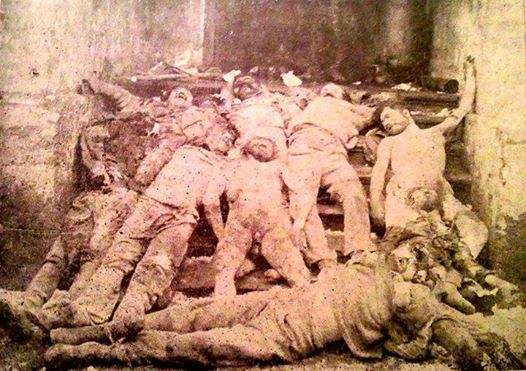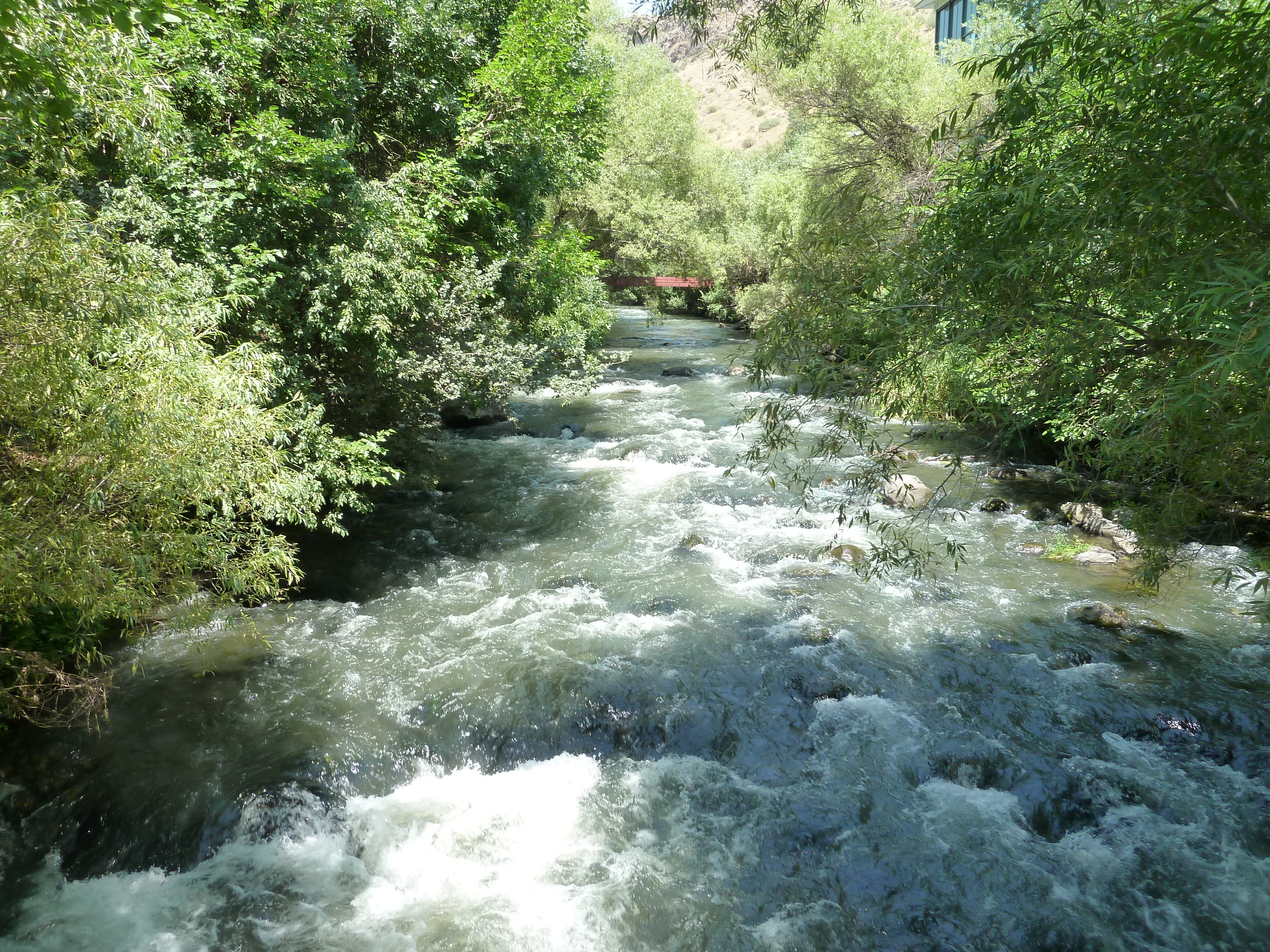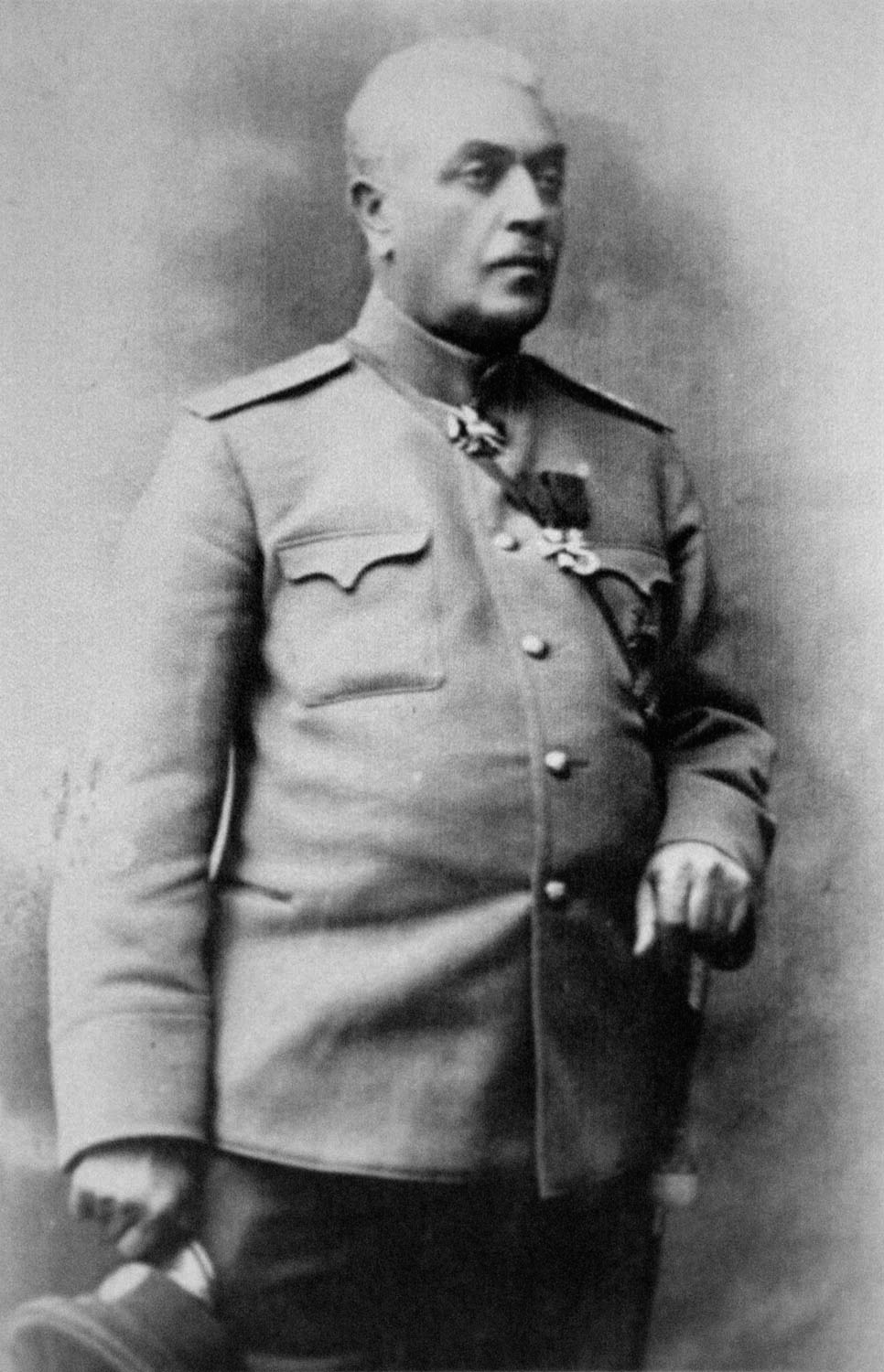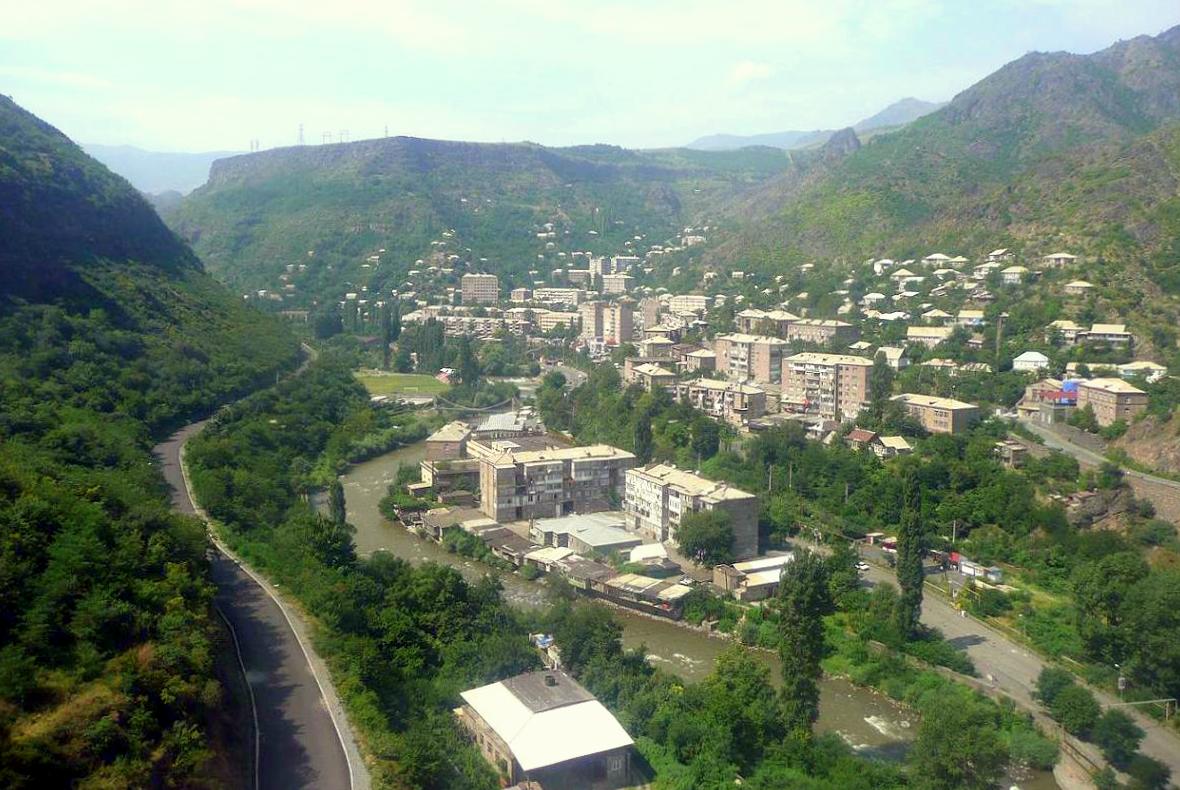|
February Uprising
The February Uprising () was an anti-Bolshevik rebellion by the nationalist Armenian Revolutionary Federation which started on February 13 and was suppressed on April 2, 1921, by the recapture of Yerevan by Bolshevik forces. Background After the Republic of Armenia was Sovietized in December 1920, about 1,000 Armenian officers were arrested by the new Bolshevik authorities, including generals Tovmas Nazarbekian and Movses Silikyan. They were forced to walk from Yerevan to Alaverdi by foot (about 160 kilometers) and some of them were killed on the road. These officers were subsequently sent to jails in Baku and Russia. In February 1921, many heroes of the Battle of Sardarabad were shot, including Daniel Bek-Pirumyan, while his brother Poghos Bek-Pirumyan committed suicide after being tortured. Pro-Armenian Revolutionary Federation (ARF, the former ruling party of Armenia) intellectuals were also harassed. Wheat was taken away from villagers without any compensation. The upr ... [...More Info...] [...Related Items...] OR: [Wikipedia] [Google] [Baidu] |
Red Army Invasion Of Armenia
The Red Army invasion of Armenia was a military campaign which was carried out by the 11th Army of Soviet Russia from September to 2 December 1920 in order to install a new Soviet government in the First Republic of Armenia, a former territory of the Russian Empire. The invasion coincided with an invasion by Kemalist Turkey and anti-government insurrections organized by local Armenian Bolsheviks. The invasion led to the dissolution of the First Republic of Armenia and the establishment of the Armenian Soviet Socialist Republic. Militant resistance continued in southern Armenia under Nzhdeh's self-declared Republic of Mountainous Armenia until July 1921. Background Following the collapse of the Ottoman and Russian Empires, Armenia declared independence in 1918. However, the new republic faced immense challenges, including refugees from the Armenian Genocide, and military threats from Azerbaijan and Turkey. By 1920, Soviet Russia was expanding its influence in the South ... [...More Info...] [...Related Items...] OR: [Wikipedia] [Google] [Baidu] |
11th Army (RSFSR)
The 11th Army was a field army of the Red Army during the Russian Civil War, which fought on the Caspian-Caucasian Front. It took a prominent part in the sovietization of the three republics of the southern Caucasus in 1920–21, when Azerbaijan, Armenia, and Georgia were brought within the orbit of Soviet Russia. Russian Civil War Since the Russian Republic's Caucasus Front (April 1917 - March 1918) dissolved, it did not have a true successor organization. The Army of the North Caucasus, which was renamed 11th Army on October 3, 1918, constituted the main army of the Russian Soviet Federative Socialist Republic in the area during the Russian Civil War. During the Russian Civil War the 11th Army fought against the White troops of General Anton Denikin's Volunteer Army in the western part of the North Caucasus. It was the main strength of the Caspian-Caucasian Army Group. In January 1919, the front of 200 miles held by the Red troops along the Caucasus foothills and South Russia ... [...More Info...] [...Related Items...] OR: [Wikipedia] [Google] [Baidu] |
Vagharshapat
Vagharshapat ( ) is the List of cities and towns in Armenia, 5th-largest city in Armenia and the most populous municipal community of Armavir Province, located about west of the capital Yerevan, and north of the closed Turkish-Armenian border. It is commonly known as Ejmiatsin (also spelled Echmiadzin or Etchmiadzin, , ), which was its official name between 1945 and 1995. It is still commonly used colloquially and in official bureaucracy, a case of dual naming. The city is best known as the location of Etchmiadzin Cathedral and Mother See of Holy Etchmiadzin, the center of the Armenian Apostolic Church. It is thus unofficially known in Western sources as a "holy city" and in Armenia as the country's "spiritual capital". It was one of the major cities and a historic capitals of Armenia, capital of Kingdom of Armenia (antiquity), the ancient Kingdom of Greater Armenia. Reduced to a small town by the early 20th century, it experienced large expansion during the Soviet period beco ... [...More Info...] [...Related Items...] OR: [Wikipedia] [Google] [Baidu] |
Ashtarak
Ashtarak ( ) is a town in the Ashtarak Municipality of the Aragatsotn Province of Armenia, located on the left bank of Kasagh River along the gorge, 20 kms northwest of the capital Yerevan. It is the administrative centre of the province and an important crossroad of routes for the Yerevan–Gyumri–Vanadzor triangle. The town plays a great role in the national economy as well as the cultural life of Armenia through several industrial enterprises and cultural institutions. It has developed as a satellite town of Yerevan. The nearby village of Mughni is part of the Ashtarak municipality. As of the 2011 census, the population of the town was 18,834. However, as per the 2016 official estimate, the population of Ashtarak is 18,000. As of the 2022 census, the population of the town was 15,686. The prelacy of the Diocese of Aragatsotn of the Armenian Apostolic Church is headquartered in Ashtarak. Etymology The name of Ashtarak is the Armenian language, Armenian word for ''tower'' or ... [...More Info...] [...Related Items...] OR: [Wikipedia] [Google] [Baidu] |
Poghos Bek-Pirumyan
Poghos Bek-Pirumyan (; 8 June 1856 – 19 January 1921) was an Armenian military commander. He served as a colonel for the Russian Empire in World War I and was a commander of the Battle of Sardarabad. Biography Poghos Bek-Pirumyan was born on 8 June 1856 in Nakhichevanik village of the Shusha uezd of the Elizavetpol Governorate within the Russian Empire. He is the cousin of Daniel Bek-Pirumian. Poghos graduated from the high school in Shusha, then attended cadet school, and joined the Imperial Russian Army in 1878. He held several positions of battalion and regiment commander, and participated in both the Russo-Turkish War of 1877–78 and the Russo-Japanese War of 1904–05. In 1914, Bek-Pirumyan retired, but came out of retirement that same year with the outbreak of World War I. Bek-Pirumyan fought on the Western Front, and then in the Caucasus Campaign. Since 1916, he was the commander of the 5th Armenian Rifle Regiment, which participated in the battles of Van and Mus ... [...More Info...] [...Related Items...] OR: [Wikipedia] [Google] [Baidu] |
Daniel Bek-Pirumian
Daniel-Bek Abisoghomi Pirumyan (; 22 November 1861 – 1922) was an Armenians, Armenian military commander who served in the Imperial Russian Army during World War I and in the army of the First Republic of Armenia. He was one of the commanders of Armenian forces at the Battle of Sardarabad. During the Turkish–Armenian War of 1920, he commanded the unsuccessful Battle of Kars (1920), defense of Kars and was taken prisoner. Biography Daniel-Bek Pirumyan was born in 1861 in Nakhichevanik village of the Elisabethpol Governorate of the Russian Empire (now in the disputed region of Nagorno-Karabakh). He graduated from the public school in Shusha and began his service in the Imperial Russian Army in 1881 in Yerevan. He studied at the Tbilisi, Tiflis Infantry School and the Infantry Officers' School in Lomonosov, Russia, Oranienbaum Military Academy. He was promoted to the rank of Lieutenant colonel (Eastern Europe), lieutenant colonel in 1913 and Colonel (Eastern Europe), colonel in ... [...More Info...] [...Related Items...] OR: [Wikipedia] [Google] [Baidu] |
Battle Of Sardarabad
The Battle of Sardarabad (; ) was a battle of the Caucasus campaign of World War I that took place near Sardarapat, Armenia, Sardarabad, Armenia, from 21 to 29 May 1918, between the regular Armenian military units and militia on one side and the Ottoman army that had invaded Eastern Armenia on the other. As Sardarabad is approximately west of the capital of Yerevan, the battle not only halted the Ottoman advance into the rest of Armenia, but also prevented the complete Armenian genocide, destruction of the Armenian nation. The battle paved the way for the establishment of the First Republic of Armenia and the Treaty of Batum: recognition of Armenia by the Ottoman Empire. In the words of Christopher J. Walker, had the Armenians lost this battle, "it is perfectly possible that the word Armenia would have henceforth denoted only an antique geographical term". Background Ottoman invasion of Eastern Armenia After the October Revolution, October Revolution of 1917 in Russia an ... [...More Info...] [...Related Items...] OR: [Wikipedia] [Google] [Baidu] |
Baku
Baku (, ; ) is the Capital city, capital and List of cities in Azerbaijan, largest city of Azerbaijan, as well as the largest city on the Caspian Sea and in the Caucasus region. Baku is below sea level, which makes it the List of capital cities by elevation, lowest lying national capital in the world and also the largest city in the world below sea level. Baku lies on the southern shore of the Absheron Peninsula, on the Bay of Baku. Baku's urban population was estimated at two million people as of 2009. Baku is the primate city of Azerbaijan—it is the sole metropolis in the country, and about 25% of all inhabitants of the country live in Baku's metropolitan area. Baku is divided into #Administrative divisions, twelve administrative raions and 48 townships. Among these are the townships on the islands of the Baku Archipelago, as well as the industrial settlement of Neft Daşları built on oil rigs away from Baku city in the Caspian Sea. The Old City (Baku), Old City, conta ... [...More Info...] [...Related Items...] OR: [Wikipedia] [Google] [Baidu] |
Alaverdi, Armenia
Alaverdi (, , Greek language, Greek: Αλαβερντί), is a town and municipal community in the Lori Province at the northeastern part of Armenia, near the Armenia–Georgia border, border with Georgia (country), Georgia. It is located at the only direct rail link between Armenia and Georgia. Situated at the bottom of the Debed river gorge, Alaverdi is an important commercial and industrial centre in northern Armenia. As of the 2022 census, the population of the town is 12,152, down from 12,243 reported in 2011 and 26,300 reported in 1989. Currently, the town has an approximate population of 11,000 as per the 2016 official estimate. Etymology Historically, the area around Alaverdi was known as Manasgomer or Manits Gom during the medieval period. Starting from the 17th century, the settlement became known as Alaverdi, derived from the name of a 17th-century Turkic ''Borçalı'' tribe leader ''Allahverdi Mollaoğlu Tarkhan''. However, Alaverdi was formed as a settlement known ... [...More Info...] [...Related Items...] OR: [Wikipedia] [Google] [Baidu] |
Movses Silikyan
Movses Silikyan or Silikov (, ; 14 September 1862 – 22 November 1937) was an Armenian general who served in the Imperial Russian Army during World War I and later in the army of the First Republic of Armenia. He is regarded as a national hero in Armenia for his role in the Armenian victory at the Battle of Sardarabad. Following Russia's withdrawal from Transcaucasia and conclusion of a separate peace with the Ottoman Empire under the Treaty of Brest-Litovsk in March 1918, Silikyan and other Armenian generals organized the defense of Armenia against invading Ottoman forces. After the Armenian victories at the battles of Sardarabad, Karakilisa and Bash Abaran in May 1918, the First Republic of Armenia declared its independence. Silikyan received the rank of lieutenant general of the Armenian army and held various top military positions. Following the Sovietization of Armenia in 1920, Silikyan was exiled to Ryazan along with other high-ranking Armenian military officers, but ... [...More Info...] [...Related Items...] OR: [Wikipedia] [Google] [Baidu] |
Tovmas Nazarbekian
Tovmas Nazarbekian (Armenian: Թովմաս Նազարբէկեան; 4 April 1855 – 19 February 1931), also known as Foma Nazarbekov (), was an Armenian general in the Russian Caucasus Army and later promoted to commander-in-chief of the First Republic of Armenia. Early life Tovmas (Thomas) Nazarbekian was born to a wealthy Russianized noble family of Armenian descent in Tiflis. He attended the military academy in Moscow. His early military engagements include the Russo-Turkish War of 1877–78 and the Russo-Japanese War of 1904–05. Nazarbekian was awarded the Order of Saint Stanislaus for his contribution to the storming of the fortress of Ardahan during the 1877–1878 Russo-Turkish War. He was also awarded the Order of St. Anna for his success in Erzurum. In 1902, he was promoted to colonel. Years later in the 1904–1905 Russo-Japanese War, Nazarbekian was awarded the Gold Sword for Bravery for distinguished service during the Battle of Mukden. After the war, he attain ... [...More Info...] [...Related Items...] OR: [Wikipedia] [Google] [Baidu] |
First Republic Of Armenia
The First Republic of Armenia, officially known at the time of its existence as the Republic of Armenia, was an independent History of Armenia, Armenian state that existed from May (28th ''de jure'', 30th ''de facto'') 1918 to 2 December 1920 in the Armenian-populated territories of the former Russian Empire known as Eastern Armenia, Eastern or Russian Armenia. The republic was established in May 1918, with its capital in the city of Yerevan, after the dissolution of the short-lived Transcaucasian Democratic Federative Republic, Transcaucasian Federation. It was the first Armenian state since the Middle Ages. In its first year of independence, Armenia was confined to a small territory around Lake Sevan after its invasion by the Ottoman Empire during the Caucasus campaign. Following the Armistice of Mudros, Armenia expanded its borders in the wake of the Ottoman withdrawal, leading to a Armeno-Georgian War, brief border war with neighbouring Democratic Republic of Georgia, Georgia ... [...More Info...] [...Related Items...] OR: [Wikipedia] [Google] [Baidu] |









